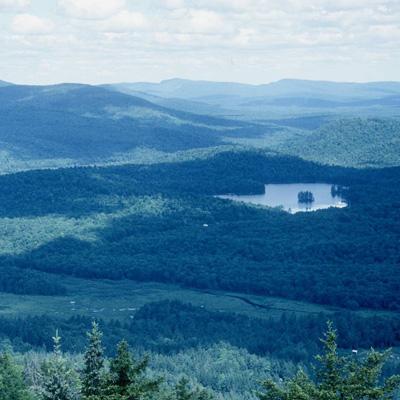Evaluation of Discrepancies in Sulfur Budgets of Watersheds in the NE US and SE CA: A Modeling and Isotopic Approach

Sulfur and nitrogen oxides are emitted into the atmosphere primarily from the burning of fossil fuels. These emissions react in the atmosphere to form compounds that are transported long distances and can be deposited as particulate pollutants such as sulfates and nitrates that contribute to acidification of ecosystems. In recent years, there has been a decline in sulfur dioxide emissions and sulfur deposition in the eastern United States. However, there is strong evidence for an unaccounted source of sulfate (SO42-) in watersheds that will delay recovery of ecosystems from the deleterious impacts of acidification.
NSRC researchers used a combination of ongoing investigations on sulfur cycling and isotopic analyses (using other atomic forms of sulfur) to evaluate responses of watersheds to decreases in sulfur deposition. Using chemical mass balances, isotopic determinations, and modeling, researchers identified sources of sulfur on a well-studied set of watersheds in the northeastern United States and southeastern Canada.
Most watersheds showed large net losses of sulfate on an annual basis and evidence of an internal source of sulfate, which is likely from the mineralization of organic sulfur stored from decades of increased sulfur deposition. Mobilization of internal sulfur appears to contribute about 1 to 6 kilograms of sulfur per hectare per year to stream fluxes at these sites and is affecting the rate and extent of recovery from acidification even as sulfur deposition rates have declined. This internal sulfur source should be considered when developing critical deposition loads that will promote ecosystem recovery and reduce loss of critical nutrients in the Northern Forest region.
